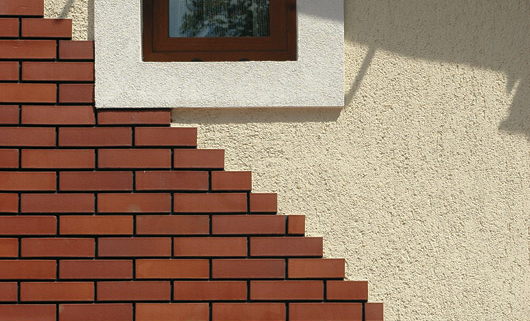We insulate the facade of a residential building
Buying a new home or building a new cottage, every owner dreams that his house is warm and cozy. Therefore, we strive to fill our house with warmth, install new modern heating appliances, build fireplaces and stoves. But this will not save us from the cold in the winter season, if due attention was not paid to external insulation during the construction of the house.
Experts estimate that heat loss through the walls of residential buildings is up to 45%, through windows and doors – 35%, through attics and basements – up to 22% of the total heat energy. Previously, the prevailing opinion that the device of an inter-wall “air cushion” solves the problem of thermal insulation turned out to be untenable, since heat escapes through microcracks in the brick.
Thanks to external insulation, the microclimate in the room becomes more comfortable, the likelihood of fungus due to freezing of the walls and dampness decreases, we can use less heating appliances, which, in turn, leads to a reduction in heating costs. In addition, external thermal insulation does not allow excess moisture to accumulate in the room and does not reduce the useful area of housing.
The solution to the problem of a warm house lies in several planes. You can go by increasing the thickness of the walls: the thicker the wall, the lower the thermal conductivity. But this is a resource-intensive and costly way. The most effective way is the use of thermal insulation materials. For example, a ten-centimeter layer of fiberglass material can replace 160 cm of brickwork or 45 cm of pine timber by its heat-insulating properties.
The use of thermal insulation materials to insulate the house reduces the cost of construction, reduces its time, makes the construction easier, and, therefore, it will require the construction of a less massive foundation.
It should be noted that there is no single universal solution to the problem of thermal insulation. In each case, the method of thermal insulation will be different. It depends on the nature of the climate and terrain, on the design features of the house, on the types of building materials from which it is built. In addition, various insulation materials require their own installation algorithm.
Modern industry offers the widest selection of thermal insulation materials. But they are all divided into three types, depending on the raw materials. The first type is organic thermal insulation. It includes various types of polymers: polystyrene, foamed polyethylene, etc. The main disadvantage of this type of thermal insulation is its low fire resistance. The second type is inorganic materials. These are fiberglass and products made from it, mineral wool, foam concrete, etc. This type of thermal insulation “suffers” from increased moisture conductivity. Therefore, in the manufacture of this type of materials, their additional processing is carried out with special compounds to reduce water absorption. And the third type is mixed materials, which are made on the basis of asbestos and expanded rocks.
In addition to a variety of materials, there are also many methods of thermal insulation, which differ in installation technology. This is the method of “wet plaster”, and ventilated facade, and layered masonry. The choice of the method depends on the choice of a specific material, structural features of the structure and climatic conditions.
Summing up, I would like to say that it is necessary to approach the issues of thermal insulation of your home with all care. Each specific case requires an optimal solution, taking into account the operational characteristics of a particular material, its cost. And only after weighing all the pros and cons can you make a final decision.




Leave a Reply
Want to join the discussion?Feel free to contribute!